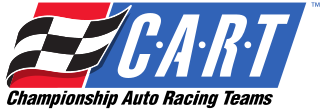
Championship Auto Racing Teams (CART) was a sanctioning body for American open-wheel car racing that operated from 1979 until dissolving after the 2003 season. CART was founded in 1979 by United States Auto Club (USAC) Championship Division team owners who disagreed with the direction and leadership of USAC, with the then-novel idea of team owners sanctioning and promoting their own series collectively instead of relying on a neutral body to do so. Through the 1980s, CART's Indy Car World Series became the pre-eminent open-wheel auto racing series in North America, featuring street circuits, road courses, and oval track racing. CART teams continued to compete at the USAC-sanctioned Indianapolis 500, which was effectively integrated into the series schedule.
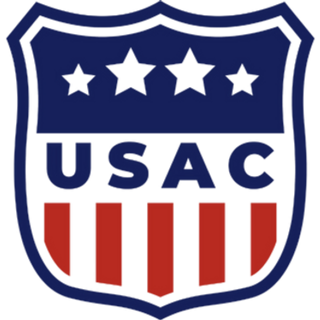
The United States Auto Club (USAC) is one of the sanctioning bodies of auto racing in the United States. From 1956 to 1979, USAC sanctioned the United States National Championship, and from 1956 to 1997 the organization sanctioned the Indianapolis 500. USAC serves as the sanctioning body for a number of racing series, including the Silver Crown Series, National Sprint Cars, National Midgets, Speed2 Midget Series, .25 Midget Series, Stadium Super Trucks, and Pirelli World Challenge. Seven-time USAC champion Levi Jones is USAC's Competition Director.

American open-wheel car racing, generally known as Indy car racing, or more formally Indianapolis car racing, is a category of professional automobile racing in the United States. As of 2024, the top-level American open-wheel racing championship is sanctioned by IndyCar. Competitive events for professional-level, open-wheel race cars have been conducted under the auspices of various sanctioning bodies, tracing its roots as far back as 1902. A season-long, points-based, National Championship of drivers has been officially recognized in 1905, 1916, and each year since 1920. As such, for many years, the category of racing was known as Championship car racing. That name has fallen from use, and the term Indy car racing has become the preferred moniker.
Chaparral Cars was a pioneering American automobile racing team and race car developer that engineered, built, and raced cars from 1963 through 1970. Founded in 1962 by American Formula One racers Hap Sharp and Jim Hall, it was named after the roadrunner, a fast-running ground cuckoo also known as a chaparral bird.

The 64th 500 Mile International Sweepstakes was held at the Indianapolis Motor Speedway in Speedway, Indiana on Sunday, May 25, 1980. Johnny Rutherford won the pole position, led 118 laps, and won the race by a commanding 29.92 second margin. After failing to finish the race the year before, Jim Hall's radical new Chaparral 2K ground effects chassis was a heavy favorite entering the month, and drove a flawless race. Rutherford, the winner in 1974 and 1976, became the sixth driver to win the Indy 500 three times.

Howdy Holmes is a former racing driver in the CART Championship Car series. He began racing in the early 1970s and was based in Stockbridge, Michigan, about 36 miles (58 km) southeast from downtown Lansing and 15 miles (24 km) northeast of Chelsea, Michigan, where his family owned a milling company.
The 1979 SCCA/CART Indy Car Series was the inaugural Championship Auto Racing Teams (CART) American open wheel racing championship series. The season consisted of 14 races. Rick Mears was the national champion, and the rookie of the year was Bill Alsup. The 1979 Indianapolis 500 was sanctioned by USAC, but counted towards the CART points championship. Rick Mears won the Indy 500, his first of four victories in the event.

The 1993 PPG Indy Car World Series season was the 15th national championship season of American open wheel racing sanctioned by CART under the name "IndyCar". The season consisted of 16 races. Nigel Mansell was the national champion as well as the Rookie of the Year. The 1993 Indianapolis 500 was sanctioned by USAC, but counted towards the CART points championship. Emerson Fittipaldi won the Indy 500, his second career victory in that event.

The 1984 CART PPG Indy Car World Series season, the sixth in the CART era of U.S. open-wheel racing, consisted of 16 races, beginning in Long Beach, California on March 31 and concluding in Las Vegas, Nevada on November 10. The PPG Indy Car World Series Drivers' Champion was Mario Andretti and the Indianapolis 500 winner was Rick Mears. Rookie of the Year was Roberto Guerrero. The 68th Indianapolis 500 was sanctioned by the USAC, but counted in the CART points standings.
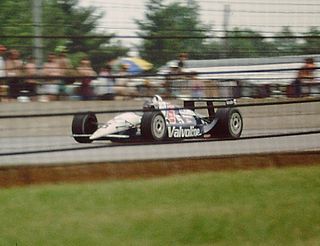
The 1990 CART PPG Indy Car World Series season was the 12th national championship season of American open wheel racing sanctioned by CART. The season consisted of 16 races, and one non-points exhibition event. Al Unser Jr. was the national champion, and the rookie of the year was Eddie Cheever. The 1990 Indianapolis 500 was sanctioned by USAC, but counted towards the CART points championship. Arie Luyendyk won the Indy 500, his first-ever victory in championship-level competition, and the fastest 500 until the 2013 Indianapolis 500.

The 1980 CART PPG Indy Car World Series season was the second in the CART era of U.S. open-wheel racing. It consisted of twelve races, beginning in Ontario, California on April 13 and concluding in Avondale, Arizona on November 8. The PPG Indy Car World Series Drivers' Champion and Indianapolis 500 winner was Johnny Rutherford. Rookie of the Year was Dennis Firestone. The entire season, including the 64th Indianapolis 500, was to be co-sanctioned by both the USAC and CART under the banner of the Championship Racing League (CRL). However, USAC withdrew from the arrangement after five races.
The 1983 CART PPG Indy Car World Series season was the 5th national championship season of American open wheel racing sanctioned by CART. The season consisted of 13 races. Al Unser was the national champion, and the rookie of the year was Teo Fabi. The 1983 Indianapolis 500 was sanctioned by USAC, but an arrangement was made such that it counted towards the CART points championship. Tom Sneva won the Indy 500, after three previous runner-up finishes.
The 1985 CART PPG Indy Car World Series season was the 7th national championship season of American open wheel racing sanctioned by CART. The season consisted of 15 races. Al Unser Sr. was the national champion, and the rookie of the year was Arie Luyendyk. The 1985 Indianapolis 500 was sanctioned by USAC, but counted towards the CART points championship. Danny Sullivan won the Indy 500, in dramatic fashion, a race that became known as the "Spin and Win."

The 1986 CART PPG Indy Car World Series season was the 8th national championship season of American open wheel racing sanctioned by CART. The season consisted of 17 races, and one non-points exhibition event. Bobby Rahal was the national champion, and the rookie of the year was Chip Robinson. The 1986 Indianapolis 500 was sanctioned by USAC, but counted towards the CART points championship. Bobby Rahal won the Indy 500, and would later become the first driver since 1980 to win Indy and the CART championship in the same season.
The 1988 CART PPG Indy Car World Series season was the 10th national championship season of American open wheel racing sanctioned by CART. The season consisted of 15 races, and one non-points exhibition event. Danny Sullivan was the national champion, winning for Team Penske. The rookie of the year was John Jones. The 1988 Indianapolis 500 was sanctioned by USAC, but counted towards the CART points championship. Rick Mears won the Indy 500, his third victory at Indy.
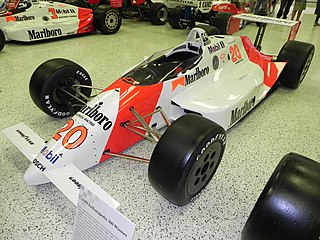
The 1989 CART PPG Indy Car World Series season was the 11th national championship season of American open wheel racing sanctioned by CART. The season consisted of 15 races, and one non-points exhibition event. Emerson Fittipaldi was the national champion, and the rookie of the year was Bernard Jourdain. Fittipaldi became the second driver after Mario Andretti to win the Formula One World Championship and the CART championship.
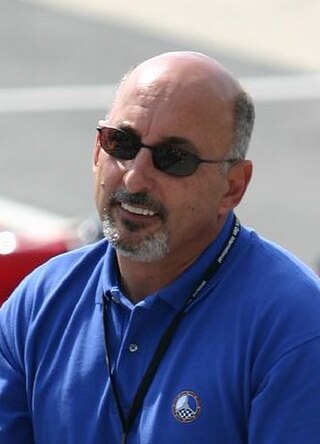
The 1992 PPG Indy Car World Series season was the 14th national championship season of American open wheel racing sanctioned by CART. The season consisted of 16 races. Bobby Rahal was the national champion, his third and final career CART title. Stefan Johansson was named the Rookie of the Year. The 1992 Indianapolis 500 was sanctioned by USAC, but counted towards the CART points championship. Al Unser Jr. won the Indy 500 in the closest finish in the history of that event.

The 1991 CART PPG Indy Car World Series season was the 13th national championship season of American open wheel racing sanctioned by CART. The season consisted of 17 races, and one non-points exhibition event. Michael Andretti was the national champion, and the rookie of the year was his younger brother Jeff Andretti.
The 1979 USAC Championship Car season consisted of seven races, beginning in Ontario, California on March 25 and concluding in West Allis, Wisconsin on August 12. The USAC National Champion was A. J. Foyt and the Indianapolis 500 winner was Rick Mears. With the exception of the Indianapolis 500, most top drivers instead competed in races sanctioned by CART.

IndyCar, LLC, is an auto racing sanctioning body for American open-wheel car racing headquartered in Indianapolis, Indiana. The organization sanctions two racing series: the premier IndyCar Series with the Indianapolis 500 as its centerpiece, and the developmental series Indy NXT. IndyCar is recognized as a member organization of the FIA through the Automobile Competition Committee for the United States.













